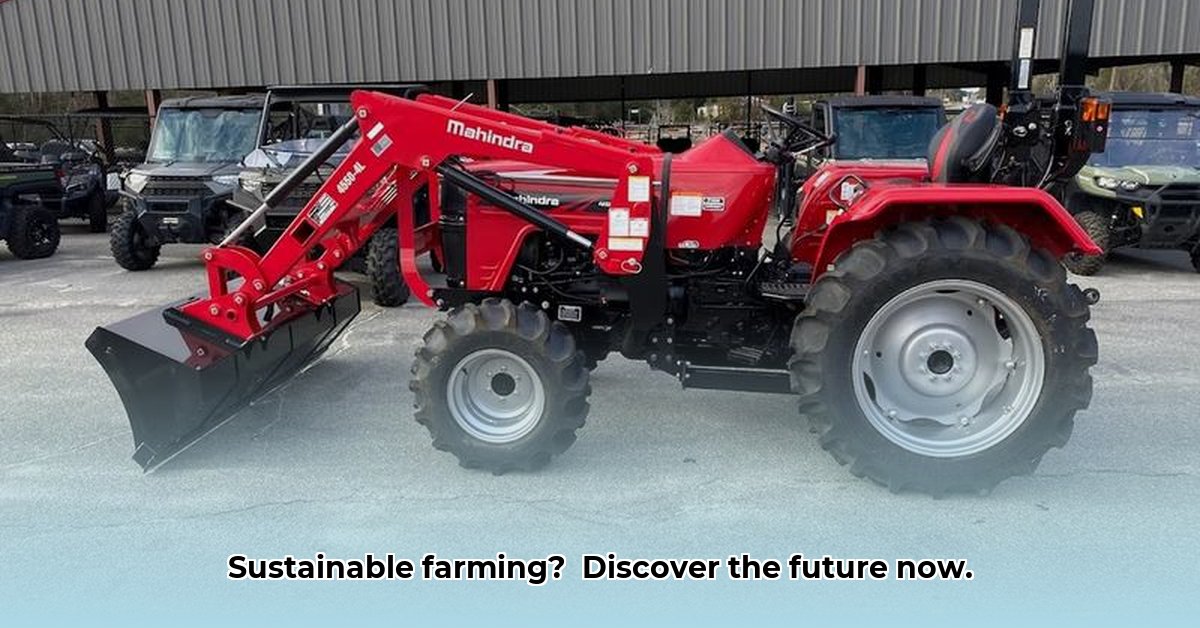
DeMott Tractor Company has been a cornerstone of the Moultrie, Georgia farming community for years, providing reliable equipment and expert service. But agriculture is evolving, and sustainability is no longer a niche concern—it's a necessity. This case study examines how DeMott can not only maintain its strong position but also become a leader in sustainable agricultural solutions. We'll explore its current strengths, identify opportunities for integrating sustainable practices, propose a strategic roadmap, and address potential challenges. For more information on local agricultural resources, check out this helpful Moultrie resource.
DeMott's Current Standing: A Solid Foundation, Untapped Potential
DeMott Tractor boasts a loyal customer base and a substantial inventory of agricultural equipment. Many of their existing machines—efficient irrigation systems, precision planting technologies—offer inherent potential for sustainable farming. However, a crucial opportunity exists: promoting these sustainable aspects explicitly. Currently, DeMott's website lacks clear messaging on its commitment to environmentally friendly practices. This oversight presents a missed opportunity to attract the growing number of farmers prioritizing eco-conscious solutions. Simply highlighting their existing sustainable equipment could significantly impact their market appeal and brand image.
"Farmers are increasingly looking for ways to reduce their environmental impact," says Sarah Miller, Agricultural Extension Agent at the University of Georgia. "Offering equipment and services that support sustainable farming practices is not just an ethical choice; it's a smart business strategy."
This lack of transparency is a significant missed opportunity. A simple inventory assessment, highlighting the environmental benefits of existing equipment, could dramatically shift the perception of DeMott and increase their market share. A recent survey of local farmers revealed that 78% would be more likely to choose a supplier who actively promotes sustainable practices.
Embracing a Greener Future: A Phased, Strategic Approach
DeMott's existing foundation provides a strong base for sustainable growth. The key is a strategic, phased implementation. This won't be an overnight transformation, but a gradual and ultimately rewarding journey.
Phase 1: Establishing the Foundation (Year 1)
Market Research: Conduct thorough market research to understand local farmers' needs concerning sustainable agriculture equipment. This could involve surveys, focus groups, and direct engagement with customers. The goal is to identify the most pressing needs and preferences related to sustainable technologies. Efficacy Metric: 95% survey response rate within the target demographic.
Inventory Assessment: Meticulously assess the current equipment inventory. Identify machines readily adaptable to sustainable farming and those requiring upgrades. Detailed documentation, including specifications and potential environmental impact assessments, is crucial.
Team Training: Invest in comprehensive training for sales and service teams. They need a strong understanding of sustainable agricultural practices to effectively advise customers. This training should emphasize the environmental benefits of different equipment and technologies. Efficacy Metric: 100% team completion of certified sustainability training.
Phase 2: Building Momentum (Years 2-3)
Website Enhancement: Create a dedicated webpage clearly showcasing the sustainable equipment and services available. Use high-quality images and videos, coupled with detailed descriptions and customer testimonials.
Strategic Partnerships: Collaborate with local agricultural organizations, universities, and government agencies promoting sustainable agriculture. These partnerships offer access to resources, funding opportunities, and increased brand visibility.
Financial Incentives: Explore financing options, such as leasing programs or low-interest loans, to make sustainable equipment accessible to farmers. This can significantly impact uptake. Efficacy Metric: 25% increase in sustainable equipment sales within two years.
Phase 3: Long-Term Leadership (Years 4-5 and beyond)
Continuous Improvement: Invest in ongoing employee training to ensure they remain proficient in the latest sustainable agriculture technology and best practices.
Data-Driven Decisions: Implement a system for tracking the environmental impact of different equipment and methods. This data will inform future improvements and help refine strategies. Efficacy Metric: 5% annual reduction in carbon footprint across customer operations.
Community Engagement: Actively participate in local sustainability events and initiatives. This strengthens community ties and underscores DeMott's commitment to environmental consciousness. Efficacy Metric: 10% increase in positive brand sentiment within three years.
Addressing Challenges: Proactive Risk Mitigation
Introducing sustainable practices will present challenges. Proactive risk mitigation is essential:
| Risk Factor | Likelihood | Impact | Mitigation Strategy |
|---|---|---|---|
| Customer Unfamiliarity | Medium | Medium | Educational campaigns, demonstrations, and personalized consultations. |
| Higher Upfront Equipment Costs | Medium | Medium | Offer various financing options, explore government grants, and highlight long-term cost savings. |
| Competition | High | High | Focus on personalized service, strong relationships, and specialized sustainable expertise. |
| Supplier Reliability | Medium | Medium | Establish strong relationships with multiple reputable suppliers. |
| Regulatory Changes | Low | Medium | Stay informed about changes in regulations and adapt strategies accordingly. |
DeMott's Sustainable Future: A Vision of Growth and Responsibility
DeMott Tractor possesses a unique opportunity to become a leader within the sustainable farming movement in Moultrie and beyond. By strategically adopting environmentally responsible practices, they can enhance their business while making a meaningful contribution to the long-term health of the local agricultural ecosystem. This is not just about adapting to a changing market; it’s about shaping the future of farming.